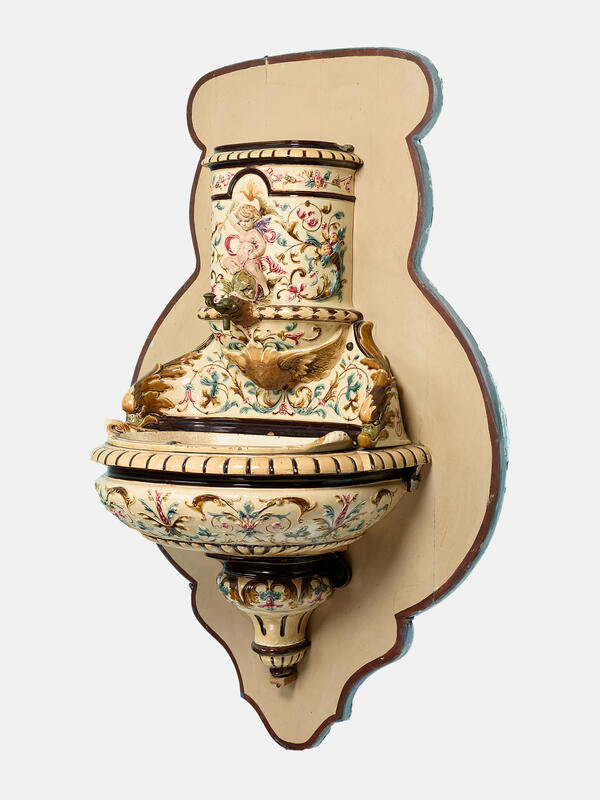Just like the life of the owners of the house, the dining room furnishings were always plain and unassuming. Sergey Sergeyev-Tsensky used to say, “Make life modest, and you will live to be a hundred years old.” The things around him were simple and easy to use.
In the corner at the entrance to the dining room, there is an old faience wash-hand-stand, made at the end of the 19th century and adorned with an image of a cupid. The faience piece is richly decorated with floral patterns in the Art Nouveau style. The painting layer includes green, crimson and brown soft-colored lacquers and some mythical images of fish, flowers, and a cupid in the center of the water container above the metal faucet.
There was no running water in the estate, although there were springs on its grounds. In the house itself, guests and owners used to wash their hands before meals using this wash-hand-stand. The clean water tank and sink were rimmed with a scallop-patterned border in brown and beige colors. The sink was emptied by hand, pouring dirty water out of it. The kitchen was in another room of the house.
Sergeyev-Tsensky made sure to wash his hands after working in the garden and walking in the park, before picking up books or sitting down at his desk. Arkady Perventsev reminisced, “After observing Sergey Nikolayevich for the first time in a domestic, relaxed atmosphere, I found him to be a hospitable man, he was not compelled to pay attention to his guests, but instead did it with full sincerity of a person with a kind and open heart.”
The wash-hand-stand was a remarkable decoration of the dining room in the Sergeyev-Tsenskys’ house. In his article “Sergeyev-Tsensky — the Word-Painter”, Nikolay Mikhailovich Lyubimov wrote,


